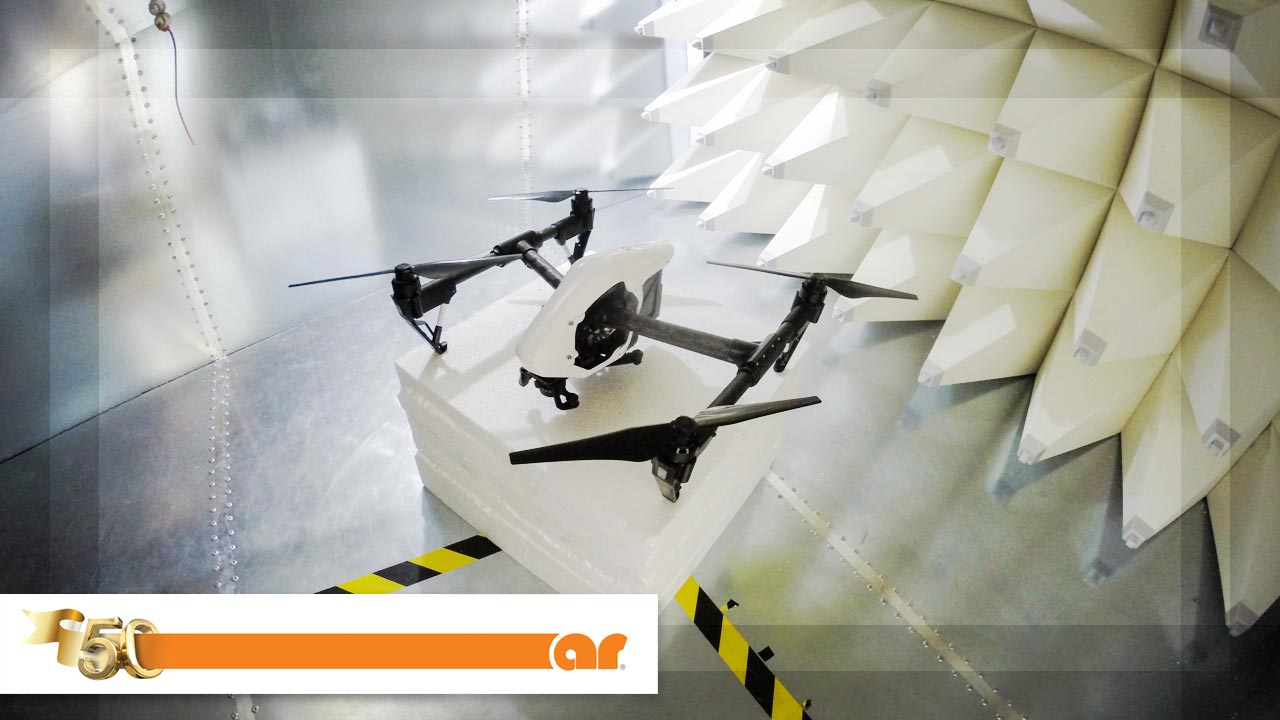This is post 3 of AR’s blog series “Specifying RF/Microwave Power Amplifiers for EMC Testing.” The full series can be viewed here.
SYSTEMS
The ability to pull together the right amplifiers for the job, with training and ongoing support is one of many important elements to building a system. This approach allows test engineers and technicians the ability to do what they do best: test. Systems engineers must work closely with customers to define the requirements. Once all the system requirements are gathered, and system losses and gains are totaled, component selection is made to identify the best amplifier solution for specific customer needs.


Figure 14: Mobile Radiated Immunity Test System
Complete EMC RI and CI systems can include everything from: amplifiers, antennas, couplers, signal generators, system controllers, receivers, and more, along with the software to control it – all in one comprehensive test system.
An example of a mobile RI test system is shown in Figure 14. This system was designed to meet HIRF (High-Intensity Radiated Fields) levels, in accordance with MIL-STD-464C testing.
This figure shows a shielded rack (doors not shown) containing; amplifiers, RF switch matrix (SCP2000), power measurement equipment, and a signal generator. Also shown are the antenna mast, antenna assembly, and motor drive to raise and lower the antenna assembly. All components are mounted to a heavy-duty mobile cart.
Other examples include; full emissions test capabilities, low, medium, and high power radiated and conducted immunity test systems. These systems are fully automated with AR’s emcware.
The below system, Figure 15, shows additional components of a HIRF system, capable of producing > 1kV/m. The frequency and power requirements dictate the number of mobile structures and fixed amplifiers subsystems.


Figure 15: HIRF Test System
High-Frequency Field-Generating Systems
Traditionally, generating low-level electric fields in the 18 – 40 GHz frequency band has been performed using traveling wave tube amplifiers (TWTA’s). These TWTAs often produce much more power than is required to generate the required field strengths while also being an extremely costly solution. Why pay for unnecessary power? AR has the AA-Series field generating systems that produce field strengths of up to 50 V/m in the 18 – 26.5 GHz and 26.5 – 40 GHz bands.
The models AA18G26 and AA26G40 each consists of an antenna directly mounted to a solid-state amplifier, along with sufficient heat sink and overtemperature fault detection. By connecting the antenna directly to the amplifier, cable losses are eliminated and can deliver maximum amplifier power to the antenna. The RF loss associated with the cable can be significant, requiring a higher power amplifier to generate the same RF field as the amplifier/antenna unit. Within each frequency band, there are two available options. The model suffixes -20 and -50 associated with each model indicates the guaranteed minimum field strength (20 V/m or 50 V/m). To minimize amplifier size, the AA-Series uses antenna gain, rather than amplifier gain to achieve higher field strengths. Table 3 gives a listing of all the available AA field generating units with their associated frequency ranges, field strengths, and antenna spot sizes.
| Model Number | Frequency Range (GHZ) | Guaranteed Field Strength (V/m) | Spot Size (m) |
| AA18G26-20 | 18 – 26 | 20 | 0.31 x 0.31 |
| AA18G26-50 | 18 – 26 | 50 | 0.14 x 0.17 |
| AA26G40-20 | 26 – 40 | 20 | 0.29 x 0.32 |
| AA26G40-50 | 26 – 40 | 50 | 0.15 x 0.17 |
Table 3: AA Series Options
Additional Reading: AR Systems Brochure
Next Topic:
Specifying RF/Microwave Power Amplifiers for EMC Testing – Amplifier Control
